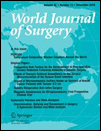Effects of Thoracic Epidural Anaesthesia on the Serosal Microcirculation of the Human Small Intestine
Electronic supplementary material: The online version of this article (https://doi.org/10.1007/s00268-018-4746-z) contains supplementary material, which is available to authorized users.
Abstract
Background
The effect of thoracic epidural analgesia (TEA) on splanchnic blood flow during abdominal surgery remains unclear. The purpose of this study was to examine whether the hemodynamic effects of TEA resulted in microcirculatory alterations to the intestinal serosa, which was visualized using incident dark-field (IDF) videomicroscopy.
Methods
An observational cohort study was performed. In 18 patients, the microcirculation of the intestinal serosa was visualized with IDF. Microcirculatory and hemodynamic measurements were performed prior to (T1) and after administering a bolus of levobupivacaine (T2). If correction of blood pressure was indicated, a third measurement was performed (T3). The following microcirculatory parameters were calculated: microvascular flow index, proportion of perfused vessels, perfused vessel density and total vessel density. Data are presented as median [IQR].
Results
Mean arterial pressure decreased from 73 mmHg (68–83) at T1 to 63 mmHg (±11) at T2 (p = 0.001) with a systolic blood pressure of 114 mmHg (98–128) and 87 (81–97), respectively (p = 0.001). The microcirculatory parameters of the bowel serosa, however, were unaltered. In seven patients, blood pressure was corrected to baseline values from a MAP of 56 mmHg (55–57), while microcirculatory parameters remained constant.
Conclusion
We examined the effects of TEA on the intestinal serosal microcirculation during abdominal surgery using IDF imaging for the first time in patients. Regardless of a marked decrease in hemodynamics, microcirculatory parameters of the bowel serosa were not significantly affected.
Trial registry number
ClinicalTrials.gov identifier NCT02688946.




